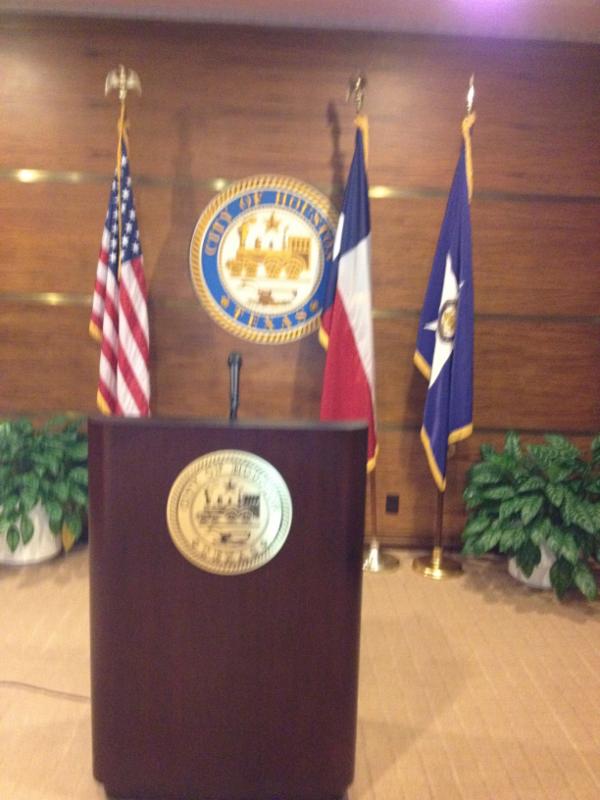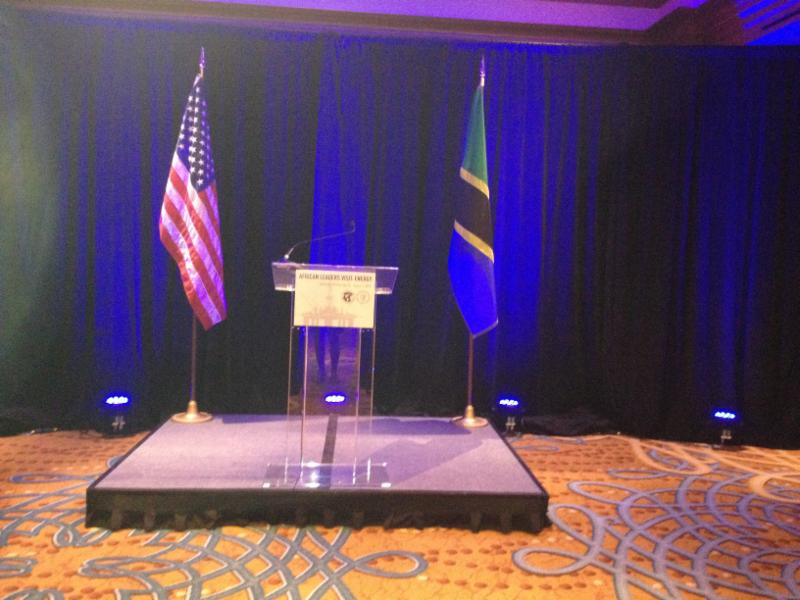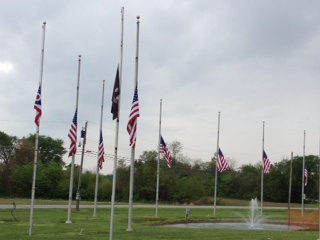Memorial Day & Displaying the U.S. Flag

I recently returned from a family trip to Ohio. As we drove through the small town of Woodville, in Sandusky County, my husband and I noticed flags flying at half staff. While I don’t know whether the flags were lowered to honor a fallen soldier, first responder, or beloved citizen, they were a poignant reminder that this country still has troops in harm’s way in distant lands. As we in the United States prepare to commemorate Memorial Day, I hope you will take a moment away from your barbecue or picnic to honor this who have fallen and those who continue to serve. Do something to help the families of those who serve in our military. Visit Joining Forces and join First Lady Michelle Obama and Dr. Jill Biden and take action. The site includes several options, from volunteering to sending a message of gratitude.
This time of year, the Protocol Lady gets lots of questions regarding the proper display of the U.S. flag, so read below for a review of the basic rules.
Throughout the year I get lots of questions regarding the proper display of the U.S. flag, but the number increases around Memorial Day and Veterans Day. Below, I have listed the basic guidelines. To see the complete rules for properly displaying the U.S. flag as set in the U.S. Flag Code, just click on the code.

- 1. Flags, like people, have rank1, and are displayed in order according to it:
-
- Country Flags
- State Flags
- City Flags
- Organization Flags
- 2. In the U.S., the U.S. flag is placed in the position of honor, which is to its own right, or your left or as you look at a stage. No other flag or pennant should be placed above the U.S. flag or to the right of the flag.2
- 3. Flags of other countries are given equal rank as that of the United States, and therefore should be of equal size and quality and flown at the same height on separate flag poles or staffs. International usage forbids the display of the flag of one nation above that of another nation in time of peace.

- 4. Many businesses have three flag poles, with the one in the center being taller. In this case, the U.S. flag is displayed at the center–the highest point in the group of several state and local flags or pennants. The state flag would then be in the lower position to the right of the U.S. flag and the city or organization flag or pennant with the lowest rank would be the left of the U.S. flag. As a matter of protocol, the U.S. flag should also be raised first and lowered last. In this scenario, you could not fly another country’s flag, since it would be lower than that of the U.S.
- 5. When flags of states, cities, or localities, or pennants of societies are flown on the same halyard or staff with the U.S. flag, the U.S. flag should always be on top, with no flag or pennant above it.
- 6. When the U.S. flag is displayed vertically, the union should be uppermost and to the flag’s own right, that is, to the observer’s left.
- 7. When used on a speaker’s platform, the flag, if displayed flat, should be displayed above and behind the speaker. When displayed from a staff, it should hold the position of honor at the speaker’s right as he faces the audience. Any other flag should be placed on the left of the speaker or to the right of the audience.
- 8. The U.S. flag, when flown at half-staff, should be first hoisted to the peak for an instant and then lowered to the half-staff position. The flag should be again raised to the peak before it is lowered for the day. On Memorial Day, the flag should be displayed at half-staff until noon only, then raised to the top of the staff.
 The President can issue an order or instructions to fly the flag at half-staff upon the death of key leaders of the U.S. government and other officials, including foreign dignitaries as an act of respect, and in accordance with recognized customs or practices not inconsistent with law.
The President can issue an order or instructions to fly the flag at half-staff upon the death of key leaders of the U.S. government and other officials, including foreign dignitaries as an act of respect, and in accordance with recognized customs or practices not inconsistent with law.
Governors of states, territories, and possessions may proclaim that the national flag shall be flown at half-staff, and the same authority is provided to the Mayor of the District of Columbia with respect to present or former officials of the District of Columbia and members of the Armed Forces from the District of Columbia. There are more specifics outlined in the code regarding the flying of the flag at half-staff, so please reference it.
Governors and mayors3 have also asked that flags be flown at half-staff upon the death of first responders in their jurisdiction: police and firefighters, or for military personnel. Some have also extended this act to other dignitaries; for example, Governor Chris Christie did so when entertainer Whitney Houston died. Political and business leaders should have policies in place regarding flying the flag at half-staff at their offices or facilities, and give careful consideration to the precedent they set.
Note Exceptions:
- 1Some organizations have their own flag protocol, which may have precedence at their events, including NATO and the Olympics.
- 2 Except during church services conducted by naval chaplains at sea, when the church pennant may be flown above the flag during church services for the personnel of the Navy.
- 3Mayors outside of Washington, D.C. have no authority to request flags be flown at half-staff on federal buildings.

Trackback from your site.